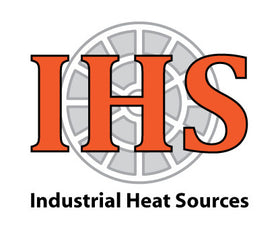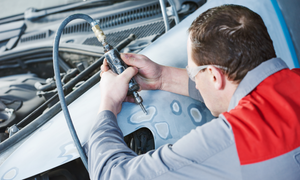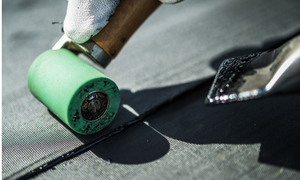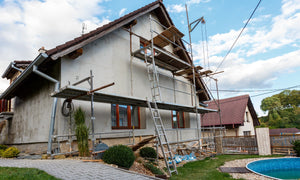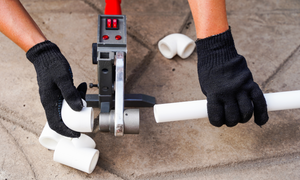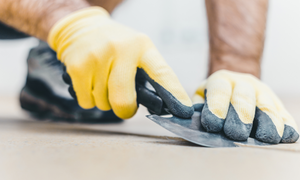How IHS Used Hot Air Tools to Repair a Cracked Windmill Blade for a Power Company

Picture this: You’re crawling inside a massive windmill blade in sub-zero temperatures. The blade itself has a 7-foot crack, and you’ve been tasked with discovering a long-term solution to repair it.
You’re bundled up, but nothing could prepare you for the arctic, Minnesota winter temperatures—especially with the blustering winds racing across the windmill farm.
It was a unique project, but IHS’s Bob Heater and Eric Pardo were up for the challenge—and the frigid cold wouldn’t keep them from identifying the ideal hot air tool solution.
The Windmill Blade Project
In January 2008, a power company contracted the IHS team to fix a cracked windmill blade on its windmill farm outside of Minneapolis. Not only that, the company wanted IHS to develop a solution that could be reused in the event another blade on the farm cracked.Instead of taking the blade off of the windmill, the company asked IHS to repair the blade while it was attached to the windmill. While the IHS team prepared for travel, the company set up an on-site office and standing platform within the blade so IHS could immediately get to work.
The Ramp and Soak Process
The IHS team first determined the tools they’d need, which included heaters, blower systems, and a temperature process controller.This was only the beginning of a long, arduous process. The IHS team knew it would have to apply and cure an epoxy to repair the blade. However, the team had to first standardize a process the power company could use going forward, no matter the season, outdoor temperature, and internal temperature of the blade.
This meant it needed to solidify a process for heating the epoxy that would repair the blade, despite changing temperatures. As a next step, the IHS team members began a ramp and soak trial testing period, in which they heated the epoxy in a controlled environment. During the “ramp” portion of the process, Bob and Eric increased the blower system’s heat output in five, 10 and 15-degree intervals, starting at about 70 degrees Fahrenheit. Each heat interval took place over a set period of time, including five, 10 and 15 minutes. The team repeatedly programmed its controller to both increase and decrease the ramp speeds and temperature increments over an hour of time.
Once the epoxy’s temperature reached about 180 degrees Fahrenheit—the peak temperature—the “soak” process began. During this stage, the heater “soaked” the epoxy with heat for approximately three hours until it was completely cured, or hardened.
Following each test trial, the team would attempt to break the test repair. If it broke, the team returned to the drawing board, recording the data from each trial run. After three days, the team discovered a solution that didn’t break. It then replicated the solution within the blade, using a total of three heat sources to cure the epoxy over the crack.
Ongoing Tech Support
One of the most critical parts of this project—and IHS’s philosophy—was to teach the power company’s technicians how to use and repeat the ramp and soak process. Bob and Eric provided them with instructions on how to implement it, emphasizing the importance of noting the ambient temperatures within the windmill blade.Once the IHS team left, Bob and Eric offered ongoing tech support for the power company’s technicians as they worked to understand and implement the process themselves.
Having Industry Challenges? Let IHS Help.
No matter your challenges, IHS is equipped to handle them—and craft solutions for your specific needs. Reach out to us by phone or email and we will personally create custom solutions for your issues.
- Robert Heater
